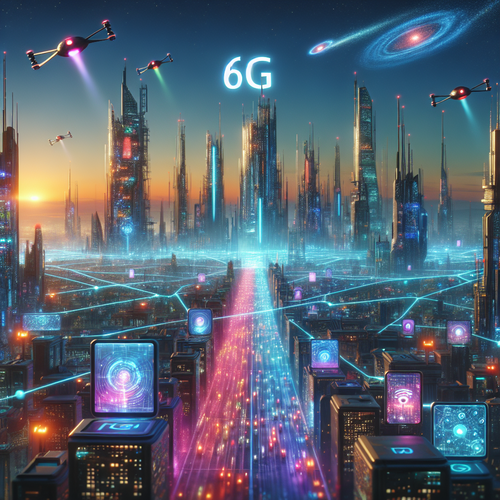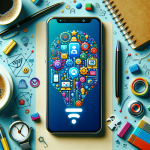
What is 6G? — Previewing the Next-Gen Mobile Tech
What is 6G? — Previewing the Next-Gen Mobile Tech
The evolution of mobile technology has been a remarkable journey, taking us from the first generation (1G) to the latest advancements in 5G. Now, as we stand at the cusp of the next revolution in connectivity, it’s essential to understand what 6G technology entails and how brands are preparing for its arrival. In this guide, we will delve into the key features and potential applications of 6G, along with the steps manufacturers and telecommunication companies are taking to embrace this transformative technology.
Prerequisites for Understanding 6G
- Familiarity with 5G: Before we dive into 6G, it’s crucial to understand the advancements 5G has provided, including lower latency, greater capacity, and faster speeds.
- Basic knowledge of telecommunications: A foundational grasp of how communication networks work will enhance your understanding of the innovations introduced with new generations.
What is 6G?
6G stands for the sixth generation of mobile networks, expected to emerge around 2030. It aims to provide enhanced speed, lower latency, and more reliable connectivity compared to its predecessor, 5G. While exact specifications are still under discussion, several anticipated key features include:
- Speed: Theoretically, 6G could enable data transfer rates exceeding 1 terabit per second (Tbps), significantly boosting productivity and enhancing user experiences.
- Latency: With a target of less than 1 millisecond, 6G will allow near-instantaneous communication, crucial for applications like remote surgery and autonomous vehicles.
- Reliability: Higher reliability is expected to support millions of connections per square kilometer, making it ideal for densely populated urban areas.
- Integration with AI and IoT: 6G promises to interlink various technology ecosystems, effectively bridging the digital and physical worlds.
Potential Applications of 6G
6G technology holds the potential to revolutionize numerous fields by enabling various applications:
- Augmented Reality (AR) and Virtual Reality (VR): Transforming the entertainment and gaming industry with high-fidelity experiences.
- Smart Cities: Enhancing urban living through IoT integration and real-time data analytics to optimize services.
- Healthcare: Remote care automated processes powered by AI, including telemedicine solutions that rely on ultra-reliable networks.
- Transportation: Facilitating connected Autonomous Vehicles (AV) that communicate with one another and surrounding infrastructure for improved safety.
How Brands Are Preparing for 6G
As the 6G landscape is being shaped, various companies are already making strategic moves to ensure they are prepared for the new era of connectivity. Here are some key developments:
- Investment in Research and Development: Telecommunication giants like Nokia, Ericsson, and Huawei are ramping up their R&D initiatives, focusing on 6G technology’s foundational elements such as advanced antennas and new spectrum research.
- Strategic Collaborations: Various stakeholders are collaborating to form alliances that will help them share knowledge and research insights, streamlining the path to commercialize 6G solutions.
- Policy Engagement: Companies are working closely with governments and regulatory bodies to shape favorable policies and standards that will facilitate a smoother rollout of 6G.
Challenges ahead
Despite its exciting prospects, 6G also faces several challenges that need to be addressed, including:
- Infrastructure Investment: Significant investment in new infrastructure will be required to support the advanced networks.
- Standardization: Global consensus on standards and protocols is necessary for widespread implementation.
- Cybersecurity: As connectivity increases, so do risks. Protecting data and devices from security threats will be vital.
Summary Checklist
- 6G aims for speeds exceeding 1 Tbps and latency below 1 millisecond.
- Anticipated applications include AR/VR, smart cities, and connected transport.
- Major brands are investing in R&D and forming collaborations to prepare.
- Challenges include infrastructure investment, standardization, and cybersecurity measures.
In conclusion, while 6G is still a vision of the future, its implications are profound, promising to redefine how we connect and communicate. It’s an exciting time for technology enthusiasts and industry leaders as they work together to bring this ambitious leap forward to fruition. For more insights on tech innovations, check out our article on installing Aircrack-ng for Wi-Fi Security Testing.














